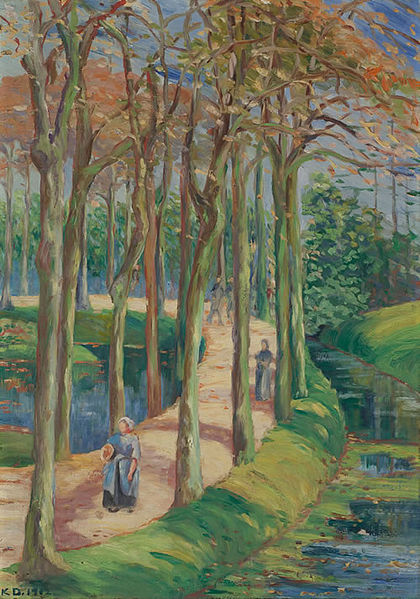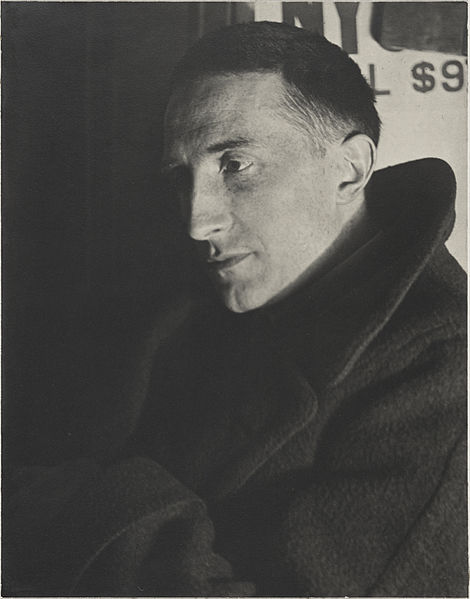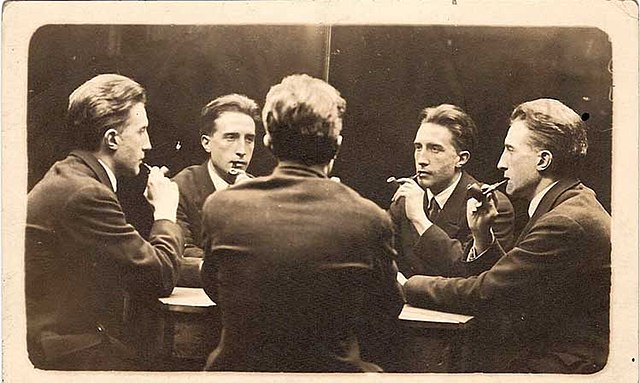Katherine Sophie Dreier was an American artist, lecturer, patron of the arts, and social reformer. Dreier developed an interest in art at a young age and was afforded the opportunity of studying art in the United States and in Europe due to her parents' wealth and progressive attitudes. Her sister Dorothea, a Post-Impressionist painter traveled and studied with her in Europe. She was most influenced by modern art, particularly by her friend Marcel Duchamp, and due to her frustration with the poor reception that the works received, she became a supporter of other artists. She was co-founder of the Society of Independent Artists and the Société Anonyme, which had the first permanent collection of modern art, representing 175 artists and more than 800 works of art. The collection was donated to Yale University. Her works were exhibited in Europe and the United States, including the 1913 International Exhibition of Modern Art.
Dreier in 1910
Anne Goldthwaite - Portrait of Katherine S. Dreier, between 1915 and 1916, Yale University Art Gallery
Katherine Sophie Dreier, Landscape with Figures in Woods or The Avenue, Holland, ca. 1911–12. Oil on canvas, 27 ¼ x 19 in. George Walter Vincent Smith Art Museum, Springfield, Massachusetts, Gift from the Artist's Estate.
Katherine Sophie Dreier, Abstract Painting of Marcel Duchamp, 1918, Museum of Modern Art, New York
Henri-Robert-Marcel Duchamp was a French painter, sculptor, chess player, and writer whose work is associated with Cubism, Dada, and conceptual art. He is commonly regarded, along with Pablo Picasso and Henri Matisse, as one of the three artists who helped to define the revolutionary developments in the plastic arts in the opening decades of the 20th century, responsible for significant developments in painting and sculpture. He has had an immense impact on 20th- and 21st-century art, and a seminal influence on the development of conceptual art. By the time of World War I, he had rejected the work of many of his fellow artists as "retinal", intended only to please the eye. Instead, he wanted to use art to serve the mind.
Portrait of Marcel Duchamp, 1920–21 by Man Ray, Yale University Art Gallery
Three Duchamp brothers, left to right: Marcel Duchamp, Jacques Villon, and Raymond Duchamp-Villon in the garden of Jacques Villon's studio in Puteaux, France, 1914, (Smithsonian Institution collections)
Five-Way Portrait of Marcel Duchamp, 21 June 1917, New York City
Photograph of Duchamp's Fountain (1917) by Alfred Stieglitz








